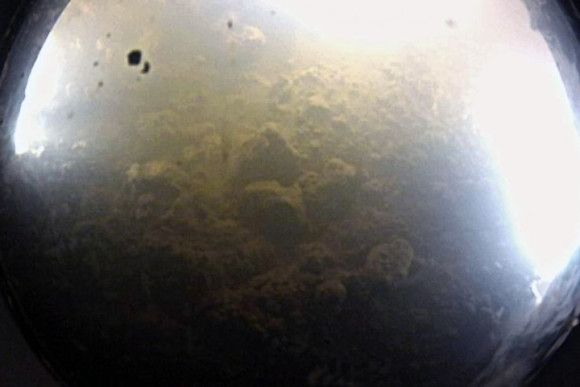If you wonder what it looks like to descend into a deep hole of ice, here’s a still captured from a video camera on a baseball bat-sized probe as it was being lowered through 800 meters (2,600 feet) of ice. The borehole was roughly 50 centimeters (20 inches) wide.

The Whillans Ice Stream Subglacial Access Research Drilling project is the most recent attempt to see what lies beneath Antarctica’s thick ice sheets. In January 2013, researchers trekked several hundred kilometers over Antarctica’s Ross Ice Shelf, drilled a hole through the thick ice, and lowered the tethered, robotic vehicle through the hole. They wanted to look into Lake Whillans. The lake is buried under hundreds of meters of ice, gets no sunlight, and has a water temperature of -0.5°Celsius (31°Fahrenheit.) Scientists want to know if and how life can survive and thrive in these kinds of extreme, light-less environments. They wanted to see what the terrain looks like, and lean how it affects the motion of the ice above. Also, what can these environments teach us about potential life on other planets?
This image is the first captured by that mini-submarine as it reached the bottom of Lake Whillans.

The submersible surveyed the lake with an imager and chemical sensors. It transmitted real-time imagery, as well as salinity, temperature and depth measurements, to the ice surface via fiber-optic cables.
The data enabled the research team to verify that the rest of the project’s instruments could be safely deployed into the lake. The team then collected lake water samples in order to search for microbial life. Preliminary analysis shows that the lake water did contain living bacteria.
Here’s a video about the expedition:
Bottom line: In January 2013, a probe captured images of its descent through a borehole of ice into Lake Whillans, an Antarctic lake buried under hundreds of meters of ice. The research was part of the Whillans Ice Stream Subglacial Access Research Drilling project.











